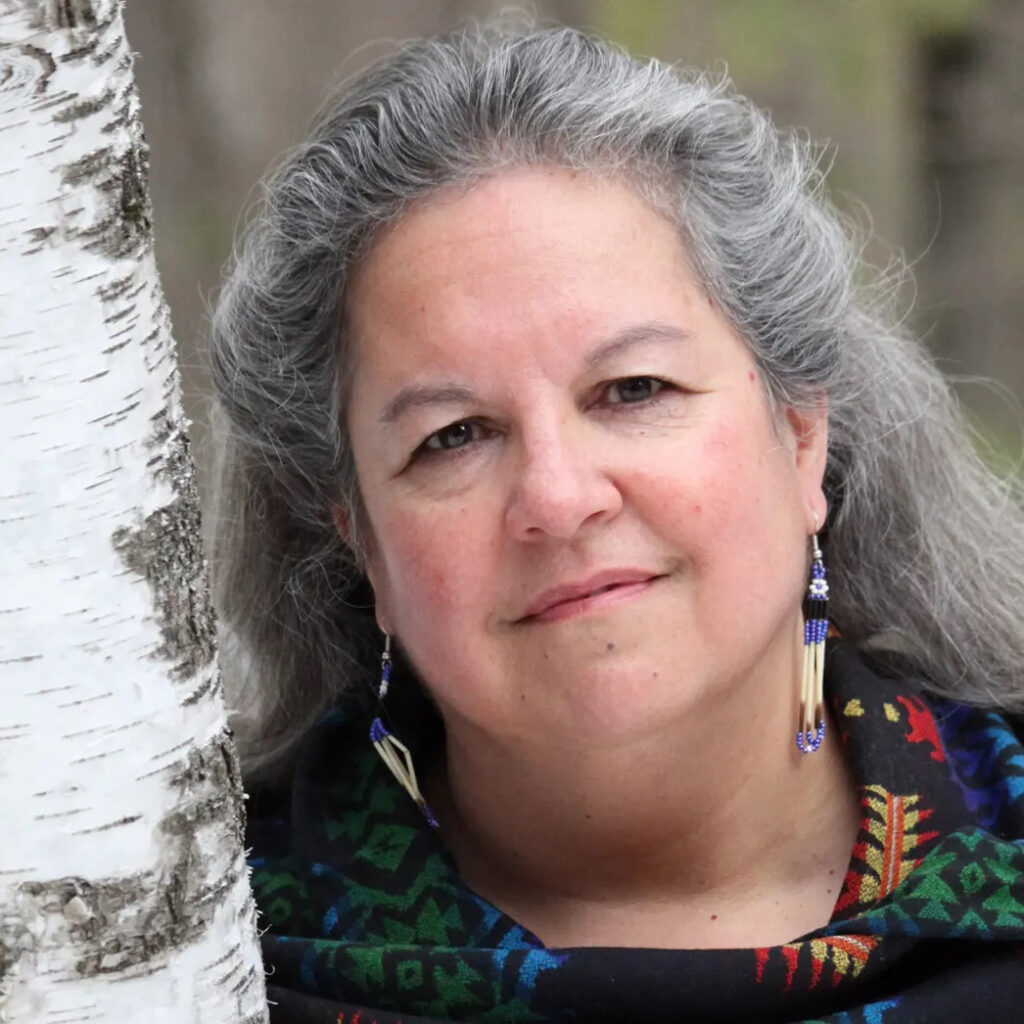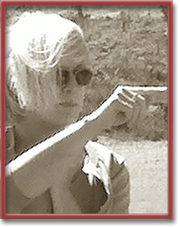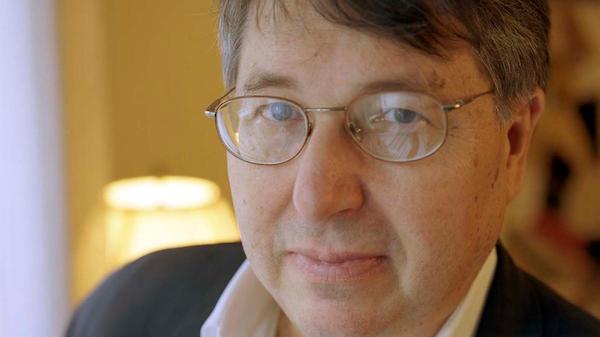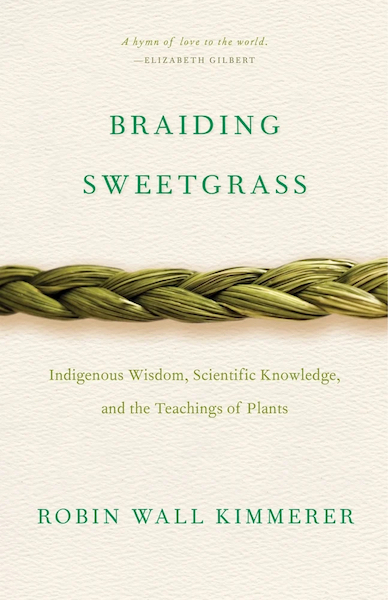Braiding Sweetgrass, by Robin Wall Kimmerer

“An ilbal is an instrument for seeing, a lens with which to view sacred relationships. In Native cultures it might comprise stories, traditions, ceremonies. Kimmerer suggests that science is the ilbal of modern Western society, through which lens we understand everything from chromosomes to galaxies. Science brings the material world into focus, but it blurs the spiritual world. We have plenty of data, she writes, but we are lacking in wisdom.”—Dr. Diane Fortenberry
Outside of a Dog
By Dr. Diane Fortenberry

Braiding Sweetgrass: Indigenous Wisdom, Scientific Knowledge and the Teachings of Plants, by Robin Wall Kimmerer (Milkweed Editions, 2013; Penguin, 2020)*

LONDON England—(Weekly Hubris)—15 July 2020—Sweetgrass (Hierochloe odorata) is an aromatic plant used in herbal medicine and burnt as part of some Native American religious ceremonies. The Latin name means ‘fragrant holy grass.’
Already, words such as “wisdom” and “holy,” not to mention “the teachings of plants,” may have dissuaded the cynical from reading further—to their loss. For the author is no beads-and-incense hippie, but a respected botanist and Professor of Environmental and Forest Biology at SUNY. In Braiding Sweetgrass, her scientific training merges with her identity as a citizen of the Potawatomi Nation, and the result is an approach to the natural world that transcends both the scientific method and indigenous traditions.
That approach may be summarized in two words: respect and reciprocity. Kimmerer believes not that the natural world should remain untouched, reflecting some radical Cartesian dualism, but that human beings need to relearn how to live in harmony with it—for the good of both sides. Other books seek to teach the same lessons, but Braiding Sweetgrass is unique in its mixture of scientific understanding, indigenous learning (the author rediscovered her Native American roots as an adult and has had to absorb the lessons of her ancestors anew), and a poet’s ear for beauty.
Kimmerer admits that the plant scientist in her sometimes squirms in response to the Potawatomi part of her that sees a garden as a gift of the land or takes care to introduce itself to wild leeks and ask their permission before rooting them out for dinner. The professor of botany prefers to evaluate “primary productivity of the artificially selected domesticated genotypes, manipulating environmental conditions through input of labour and materials to enhance yield.” Nevertheless, it takes only a slight refocusing for her to revert to the indigenous view of the natural world as protector, wealthy enough to have plenty to give away.

An object changes its nature based on whether it is a commodity or a gift. A pair of socks bought at a store is a commodity, attaching to itself no obligation apart from payment. A pair of socks knitted by your great aunt and presented to you at Christmas is a gift, and as such, forms part of a relationship. Lewis Hyde, author of the extraordinary The Gift: How the Creative Spirit Transforms the World (and other subtitles, depending on the edition), points out that a gift establishes a bond—temporary or long-term—between two people, and that among pre-industrial societies, the bond is usually cyclical. The term “Indian giver” became pejorative when Europeans, coming from a culture grounded in private property, misunderstood the gift culture of Native Americans. Gifts bestowed were, according to indigenous norms, meant to circle back, because the nature of a gift culture is reciprocity. But to the colonials, a gift was meant to be retained, and to pass it on was to disvalue it—precisely opposite to the attitude of those who were bestowing it.
So when Kimmerer the Potawatomi leaves a gift of tobacco before tapping a maple for syrup or cutting down saplings for a shelter, the material offering is not important; rather, it is an expression of gratitude and regard. Kimmerer the botanist does not assume the plant recognizes this; the point of doing it is to remind her of the debt owed to the plants, to the land. This mixture of scientific expertise and spiritual receptiveness runs throughout the book.
Even with gifts, the Potawatomi rule is never to take more than half. It is a sign of respect to the plant and to other people who might also use it, but it turns out to be a scientifically proven means of ensuring the organism’s vitality. Despite the ridicule of her fellow academics, Kimmerer encouraged a PhD student to conduct an experiment on a stand of sweetgrass, to determine if the herb thrived best when left alone, when harvested in its entirety, or when harvested selectively. The examination panel of botanists sneered and insisted that such an experiment would offer nothing new and was unworthy of a doctorate, since it was well known that any plant is happiest without human intervention. Using the best scientific methods, the student then proved that the grass thrived in partnership with humans, while the stand left untouched deteriorated. Kimmerer describes this result not as a simple case of action-reaction, but as a partnership, a bargain struck between plants and people. You harvest enough to make space for more, and the plant obliges. Harvest too much or not at all, and the plant declines.
As a teacher, Kimmerer has learned that the best lessons are provided by the plants themselves. In a field biology class—five weeks on an uninhabited island in a lake, without access to medical help or phone signal, surrounded by wilderness for a day’s walk in any direction—her students learn that a muddy pond is a natural Walmart. She chooses one out of the myriad species of plant on the island to make her point. Cattail (Typha latifolia) provides food (the starchy roots can be roasted like a potato, the innermost pith tastes like cucumber, and the pollen is almost pure protein), shelter (the leaves are long and water repellent and can be used to make a summer wigwam), cordage and thread (the leaves are split and twisted to provide twine for lashing together long leaves on a shelter, and for stitching clothing), bedding (their waxy surface repels ground moisture, and their spongy internal cells provide cushioning and insulation; the fluff that makes up the brown sausage at the end of the plant can be stuffed into pillows), light (the stalks with matted fuzz at the ends can be dipped in fat to make a torch), heat (cattail fluff serves as easily caught tinder for a handmade friction fire), and weapons (the straight, smooth stalk can be used as an arrow shaft).

After harvesting cattails all day, waist deep in water, her students then debated the idea of reciprocity, which is one thing in the abstract, but could be embarrassing in the concrete. Not everyone wants to be caught offering tobacco to a leek. In the end, they agreed that even if the plants are a gift of the land, those who gather them are no less beholden. Gracious acceptance and gratitude are important, but one should always give something back. Commendable conclusions coming from your average 21st– century teenager.
She takes life lessons from plants. A lichen, for example, “blurs the definition of what it means to be an individual.” A lichen is actually two different plants, an alga and a fungus, joined in a partnership so symbiotic that it behaves like a single entity—to which we give a single name. The alga contributes the gift of photosynthesis, the alchemy by which light and air are turned into sugar. The alga needs minerals, however, and while it can only photosynthesize when it’s moist, it has no way to protect itself from drying out. The fungus feeds on carbon harvested by photosynthesizing plants, a skill it lacks. It is very good, however, at dissolving things and so liberating their minerals, and its large surface area helps to keep the alga moist.
In an attempt to identify exactly what induces two species to live as one, scientists brought them together under ideal conditions in the laboratory, only to watch them “give each other the cold shoulder and proceed to live separate lives, in the same culture dish, like the most platonic of roommates.” It was not until the scientists created stressful conditions that the two organisms gravitated towards each other and began to cooperate. When times are easy, individuals can go it alone, but when conditions are tough and existence is tenuous, reciprocity keeps life going. “In a world of scarcity, interconnection and mutual aid become critical for survival. So say the lichens.”
Kimmerer ends on a more apocalyptic note, as any book categorized as “Ecology” must, but nevertheless believes that ‘despair is paralysis’. While we are bombarded with evidence for the destruction of our world, very little is said about how to nurture it. Braiding Sweetgrass is her attempt to make readers understand the symbiotic relationships that sustain life. She reserves her greatest contempt for those who believe that the sheer greed of our species can be sustained forever, quoting in disbelief the economist Lawrence Summers (President of Harvard University, Chief Economist of the World Bank, Treasury Secretary under Bill Clinton, Director of the National Economic Council under Barack Obama): “There are no limits to the carrying capacity of the earth that are likely to bind at any time in the foreseeable future. The idea that we should put limits on growth because of some natural limit is a profound error.” Perpetual growth, she knows both as a botanist and as a Potawatomi, is incompatible with the laws of nature.
An ilbal is an instrument for seeing, a lens with which to view sacred relationships. In Native cultures it might comprise stories, traditions, ceremonies. Kimmerer suggests that science is the ilbal of modern Western society, through which lens we understand everything from chromosomes to galaxies. Science brings the material world into focus, but it blurs the spiritual world. We have plenty of data, she writes, but we are lacking in wisdom: “It has been said that the people of the modern world suffer a great sadness, a ‘species loneliness’—estrangement from the rest of Creation. We have built this isolation with our fear and with our arrogance.” Braiding Sweetgrass is one scientist’s hymn to Creation, and a path to possible redemption.
“Robin Wall Kimmerer: The Intelligence in All Kinds of Life.”
![]()
Author’s Note: Braiding Sweetgrass was originally published in the US seven years ago, only making it into UK bookstores, in the midst of the Covid-19 lockdown, in April, when it sold out almost immediately online; a reprint is on the way.